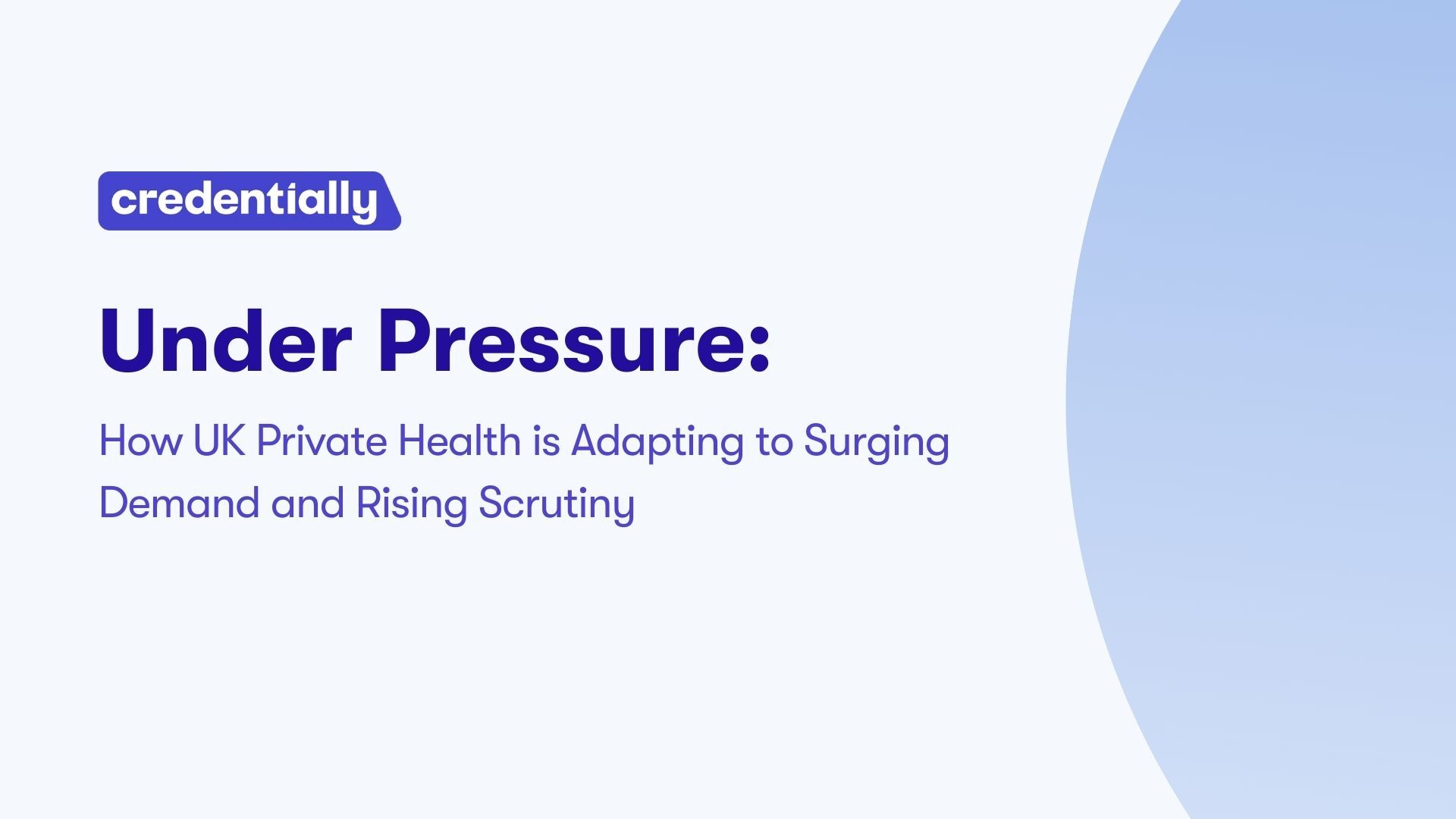
Under Pressure: How UK Private Health is Adapting to Surging Demand and Rising Scrutiny
The UK’s private healthcare sector is navigating a period of rapid change. Demand for services is rising at an unprecedented pace, fuelled by record NHS waiting times and changing patient expectations. At the same time, regulators and patients alike are calling for greater transparency, consistent safety standards, and robust governance. The result is a sector heavily under pressure driving both opportunities for growth and an urgent need for reform.
Demand at Record Levels
Private healthcare has moved from being a niche choice to a mainstream consideration. For many patients, it is no longer simply an option for luxury or convenience, it is a practical route to care when NHS services are stretched beyond capacity. NHS waiting lists are now the longest in history, with millions in England awaiting treatment. Faced with delays, more patients are turning to the independent sector for faster diagnosis and treatment.
In Q1 2022, admitted patient episodes in the independent sector topped 200,000, surpassing pre-pandemic figures (Teneo, 2023). This reflected a clear shift in patient behaviour, driven by the NHS backlog: since mid-2021, the proportion of patients waiting over 18 weeks has risen by an average of 2% each month (Teneo, 2023).
Public sentiment has evolved alongside this demand. In 2024, 67% of UK adults said they would consider private treatment, with a third expecting to pay for care within the next year (IHPN, 2024). Among 25–34-year-olds, the figure rises to 44%, showing a generational shift towards private care as a realistic option (IHPN, 2024). Not only this, the NHS is also outsourcing more: in 2024 it spent a record £216 million on private firms for X-ray and scan reporting, double the 2019 figure, driven by a shortage of over 2,000 consultant radiologists (The Guardian, 2025).
The New Private Healthcare Landscape
What we’re seeing goes beyond short-term pressures; it reflects a fundamental shift in the UK’s healthcare landscape. Capacity constraints in the NHS, combined with rising expectations for speed, quality, and choice, are pushing patients to explore private options in greater numbers.
Private providers are responding with investment, expansion, and diversification. Mergers, acquisitions, and service development are reshaping the sector, with providers moving into outpatient diagnostics, preventive health, and digital care solutions to meet demand from both self-pay patients and NHS contracts (IMAP, 2025).
This expansion is also reshaping workforce needs. To meet growing patient demand, many private providers are increasing recruitment, bringing in more clinicians, specialists, and administrative staff. New service lines and extended operating hours require not only more people, but also the right skill mix to maintain quality and safety at scale. As workforces grow, the speed and accuracy of recruitment processes become critical to sustaining high standards of care while keeping pace with patient expectations.
Rising Scrutiny on Standards
Not only is the Private Health sector having to manage unprecedented demand, but it is also under more scrutiny than ever. The Care Quality Commission (CQC) has identified variability in safety and quality standards across the independent sector. While many facilities perform strongly, around 30% of independent acute hospitals required improvement in their most recent assessments.
That said, the sector’s safety record remains strong. Data from the Private Healthcare Information Network shows that just 0.12% of private admissions result in an unplanned transfer to an NHS hospital, an indicator of generally high performance standards (Private Healthcare UK, 2018).
Maintaining consistency is critical. As providers scale and draw from larger, more flexible workforces, ensuring that every clinician is appropriately qualified, registered, and safe to practise becomes increasingly important.
The Compliance and Workforce Challenge
Private healthcare’s rapid expansion has heightened the challenge of recruiting and onboarding qualified clinicians quickly, without cutting corners. To meet surging demand, providers often rely on a mix of permanent staff, locums, and subcontracted specialists. This flexibility supports rapid scaling but makes compliance more complex.
Balancing speed with rigour is a delicate task. Providers must ensure that every clinician meets the required standards without letting verification processes delay care delivery. Without efficient systems in place, the risks include onboarding delays, administrative bottlenecks, or, in rare cases, lapses in patient safety.
How Credentially Supports a Sustainable Future
This is where Credentially plays a key role. As the independent healthcare sector scales up, the need for automated, transparent, and reliable clinician credentialing is greater than ever.
Credentially’s platform is built to:
- Automate verification with direct connections to primary sources such as the GMC, NMC, and DBS.
- Continuously monitor compliance, issuing alerts before credentials expire.
- Streamline onboarding, cutting time-to-hire without compromising safety.
- Provide audit-ready records, supporting providers in meeting CQC and contractual obligations.
By reducing administrative friction, Credentially enables providers to focus on delivering care, not chasing paperwork. For a sector facing both unprecedented demand and rising scrutiny, these capabilities are essential.
The UK’s private healthcare sector is growing in scale, complexity, and public visibility. Meeting this moment will require a combination of operational efficiency, workforce agility, and unwavering commitment to patient safety. With the right systems in place, providers can not only meet demand but also raise the bar for quality and trust.
.svg)
.svg)
.svg)